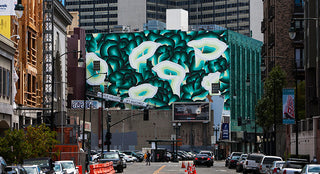There’s more to being a painter and muralist than crafting a pretty image. There’s a bigger picture—a deeper meaning that oftentimes gets lost in aesthetic. Questions we sometimes forget to ask are, “Is the piece tied to the artist’s cultural identity?” and “What story does this piece tell?” These are questions that probe our curiosities when viewing Jet Martinez’s breathtaking public works, a familiar sight and staple to those who have lived in the Bay Area over the last few decades.
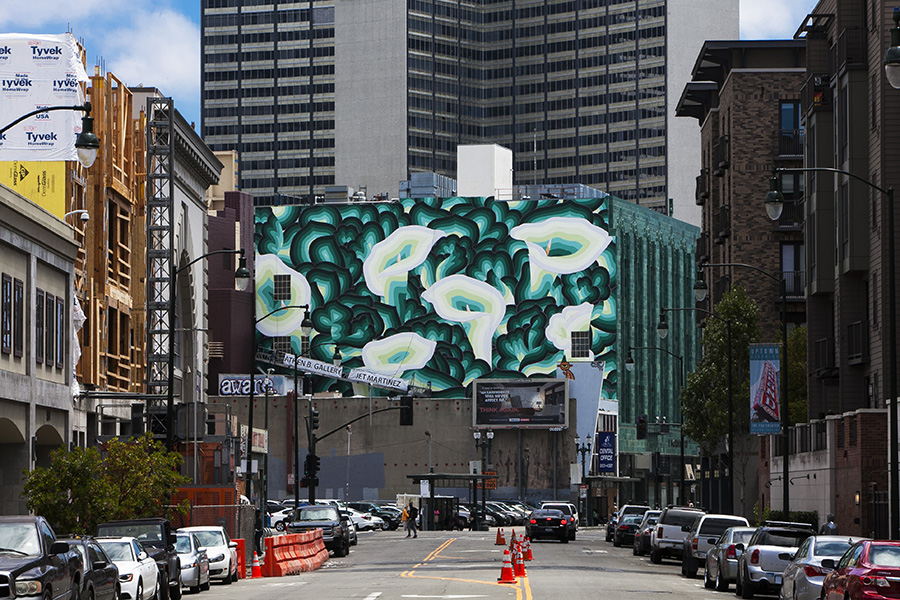
“There’s More to Green than Money”
Jet’s floral patterns and natural scapes adorn most of the walls in San Francisco’s Mission district and elsewhere around the Bay. His vibrant motif is inspired by Mexico’s distinguished folk arts, such as Amate paintings and the tradition of floral embroidery and finely crafted textiles. Like the embroiderers and weavers thread their rich culture into their textiles, Jet integrates his dynamic public works through our city to tie communities together and remind us of the importance of Mexican culture to the Mission and the Bay Area as a whole. Most recently, the artist finished his largest mural to date, “Theres More to Green Than Money,” in Downtown Oakland. Jet transformed the prominent and barren side wall of the building into a lush garden of calla lilies in white and varying shades of blue-green, complementing the green patina on the adjacent side of the building that for some time went unnoticed. And, clearly, the title of his work hints at a larger commentary.
We’re in awe of Jet’s work not only for its visual appeal, but the deeper stories that his paintings tell—and his consciousness of heritage, intention, gentrification, and commercialism. Without further ado, meet the one and only Jet Martinez.
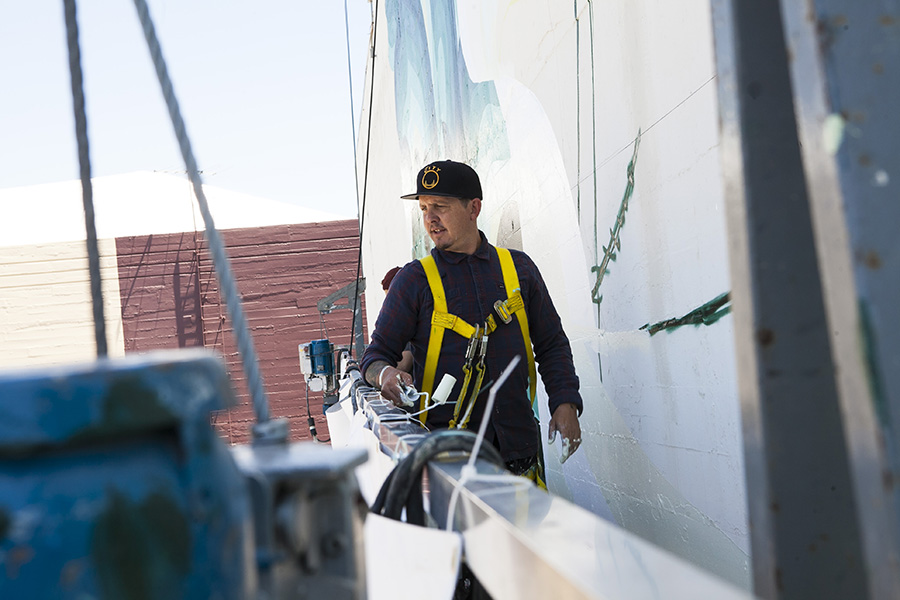
BROCK BRAKE: Growing up in Cuernavaca, Mexico, you were able to view murals by artists like Diego Rivera that express a strong sense of culture and identity for the community. How did that affect the kind work you make now?
JET MARTINEZ: In Cuernavaca and in Mexico City, I did see quite a bit of work by Diego Rivera, DA Siqueiros, Orozco, and many more. That work made a huge impression on me and when I started to really take my work seriously, I tried to model my practice after some of those masters. My work sometimes seems decorative, but often it carries a strong political intentionality that is pervasive in much of the great works of Mexican muralism.
What made you drop out of college and enroll in art school? What art school did you go to?
I was studying Spanish Literature because after moving to the US I had always wanted to stay close to my Mexican heritage, and it was just the natural thing to do based on what I was doing in high school. Education was always really important to me, so when I decided to pursue art, I spent a couple years building a portfolio and eventually applied and was accepted into the San Francisco Art Institute.
“My work sometimes seems decorative, but often it carries a strong political intentionality that is pervasive in much of the great works of Mexican muralism.”
Have you always stayed in tune with the cultural heritage from your upbringing when it comes to your work?
In a way, I have. I’ve always tried to celebrate certain holidays or eat certain foods. I try to keep up with the news, etc. But the truth is that Mexico and all of Latina America march on, and I can’t say that I am fully in tune with the current societal movements, and it’s really exciting to go there and be taken completely by surprise at the current movements in art and society. In the US we tend to freeze Mexican culture in time, but Mexico does continue to stay quite modern and unexpected.
But to answer your question, while I haven’t always done work about Mexican themes, I think my work has always had a kind of Mexican flavor to it.
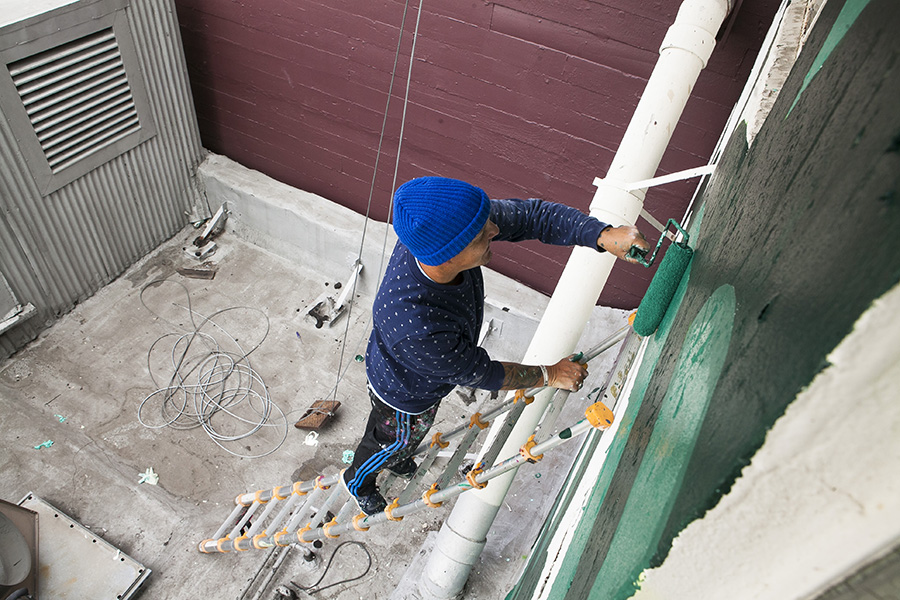
You’ve said it’s more important for you to stay active in your Bay Area community than being a globetrotting artist, which is honestly a rare thing to hear from our community of artists. Everyone wants to travel, paint on whatever they can, and do all the shows all at once—basically be in the spotlight. Being a Bay Area vet in the public art game and gallery game, what advice do you have for those young, emerging artists trying to make name for themselves?
To be totally truthful, I definitely love to travel and do projects abroad. But the truth is that there are bookends to my life due to the fact that I have a couple kids and I like to be involved in their lives. So, as a family, we try to do as many projects where I can travel but not be a huge burden by being gone months on end. Our goal is to get to the point where the kids can travel with us to do projects, get to know new places, but also have something to offer as a family in the world.
I don’t necessarily feel like I have made some great plan for my life. I feel like I have just made do with my situation as it has come to me, but have just focused on having a solid work ethic. It has never been in the cards for me to just travel around and paint murals for nothing and living from nothing, even before I had kids. I just have never had the network of people, the deep pockets, or the time to do that. I’ve always had to work, so I have just tried to fit artwork into a workday model and think of painting as my business.
My trajectory has been pretty slow and progressive. I have developed a lot of local cred because it has always been important to me to do high quality work in the public. And honestly, I’ve just stuck around for a while [laughs]. But over the years, I feel like I’ve gotten a lot of love from the community and in turn I have tried to give that back. Now when I travel for projects, I feel like I am an ambassador of the Bay Area and it gives me confidence to know that back home people have my back.
I suppose if I were to give some advice to someone trying to make a name for themselves, I would have to focus on taking time to find your voice. When you’re starting out, it seems like to make it in this biz you have to have an artistic gimmick—a character, a color, whatever—and act a certain way and be aloof. These are all great ways of shortening your career. What counts and what endures is good work not your social media persona. And the vast majority of people make their best work by practicing over and over, not by some magical stroke of the brush once in a blue moon. Work hard when no one is looking, and don’t be a dick.
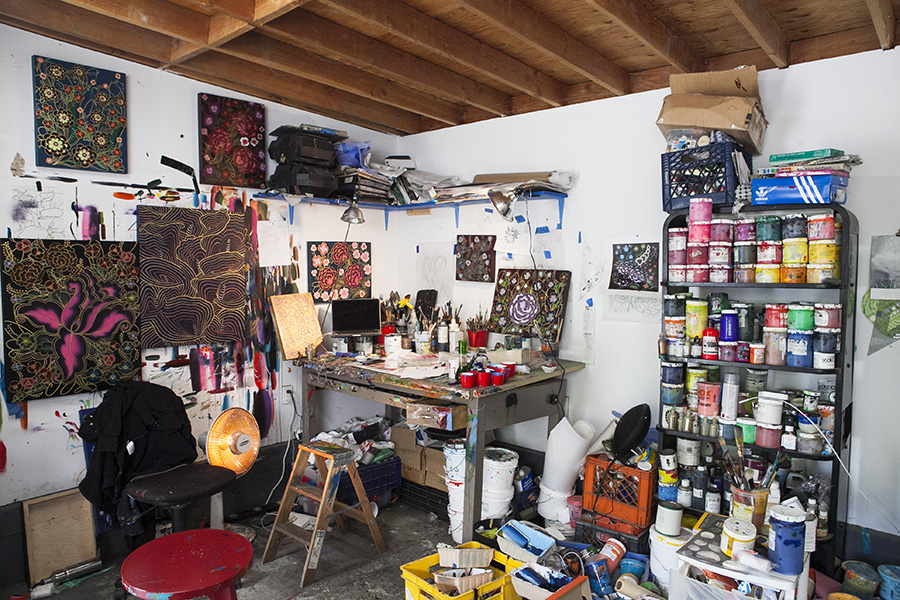
What advice do you have for those businesses or brands who want to collaborate with artists? How should they go or not go about that?
Wow, this is a loaded question! There are many companies who are wanting to get into this arena, and there is a broad range ways they try to do it. Some are more successful than others.
I think that one model that is getting pretty played out is one where a large event is planned around art and murals, where many people will be invited or it will be in a large public area. Huge amounts of money are spent on production and promotion. In the end, however, the artists are rarely compensated and if they are, it is nowhere remotely close to where it should be. The promise is that it will be great promotion for the artist, but often the artist ends up promoting the company while the company promotes itself too.
“What counts and what endures is good work not your social media persona… Work hard when no one is looking, and don’t be a dick.”
This sucks and it turns this beautiful thing we [as artists] do in our communities and turns it into a fake exercise in commercialism where no one really gets what is going on. No one really wins with this shit.
The best experiences I’ve had working with companies have been where they just found a piece, either on a wall or a painting, and let me do my thing. Everyone wins and everyone is happy. The best thing a company can do if they want to get into this realm is to give a ton of artistic freedom and to compensate their artists properly. You get what you pay for and if you pay peanuts, you don’t get butter.
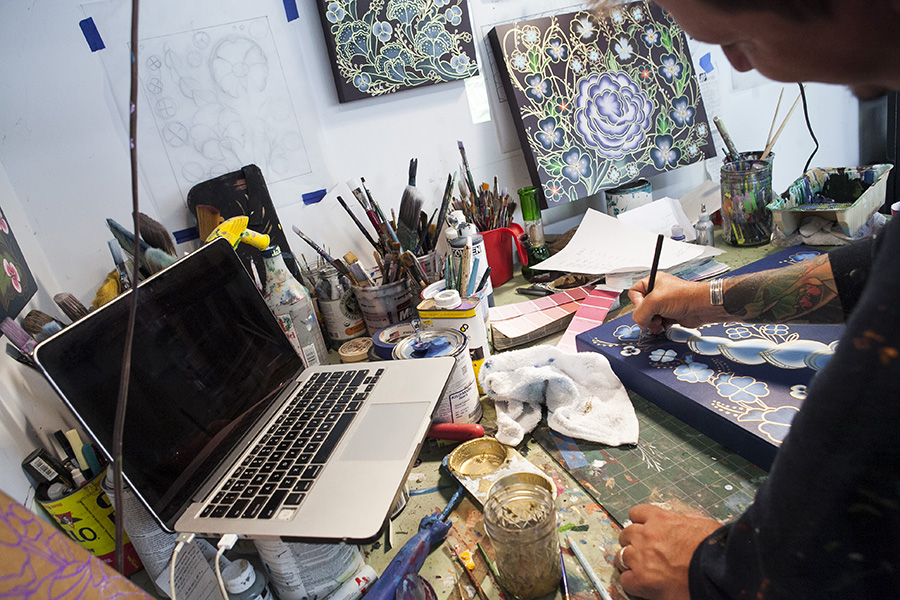
What type of role do you think artists plays in today’s world regarding issues like gentrification and civil rights?
I don’t think the responsibility is just a part of being an artist. I think it’s a choice for artists as it is for all people. It has fucking sucked the last few years watching spots that I used to love to paint in become completely safe and more upscale. When I painted some pretty flowers in a sketchy alley, I meant it as a revolutionary act, but now it’s a popular selfie wall for cute girls. I guess progress is good, but it feels so hygienic… same.
I don’t think artists are responsible for gentrification but we are definitely in the mix. It’s really up to all citizens to remain informed and involved in our society on those and all issues involving us all. We artists are able to convey ideas in different ways, but I don’t think that gives us a special responsibility to be more active than other members of society.
I do think a lot about social issues, including gentrification, and lately a lot about civil rights. I do have strong views about policing, racial relations, civility, etc. In my practice, I have realized, I want to make work that reminds the viewer of what it is that we are struggling for. Not just the struggle, but also the reason for the struggle. I personally get excited when I see people doing amazing things in the public space. To me, that’s the flavor of our country, so I try to participate in my community with my art, and that is my way to play a role in social movement.
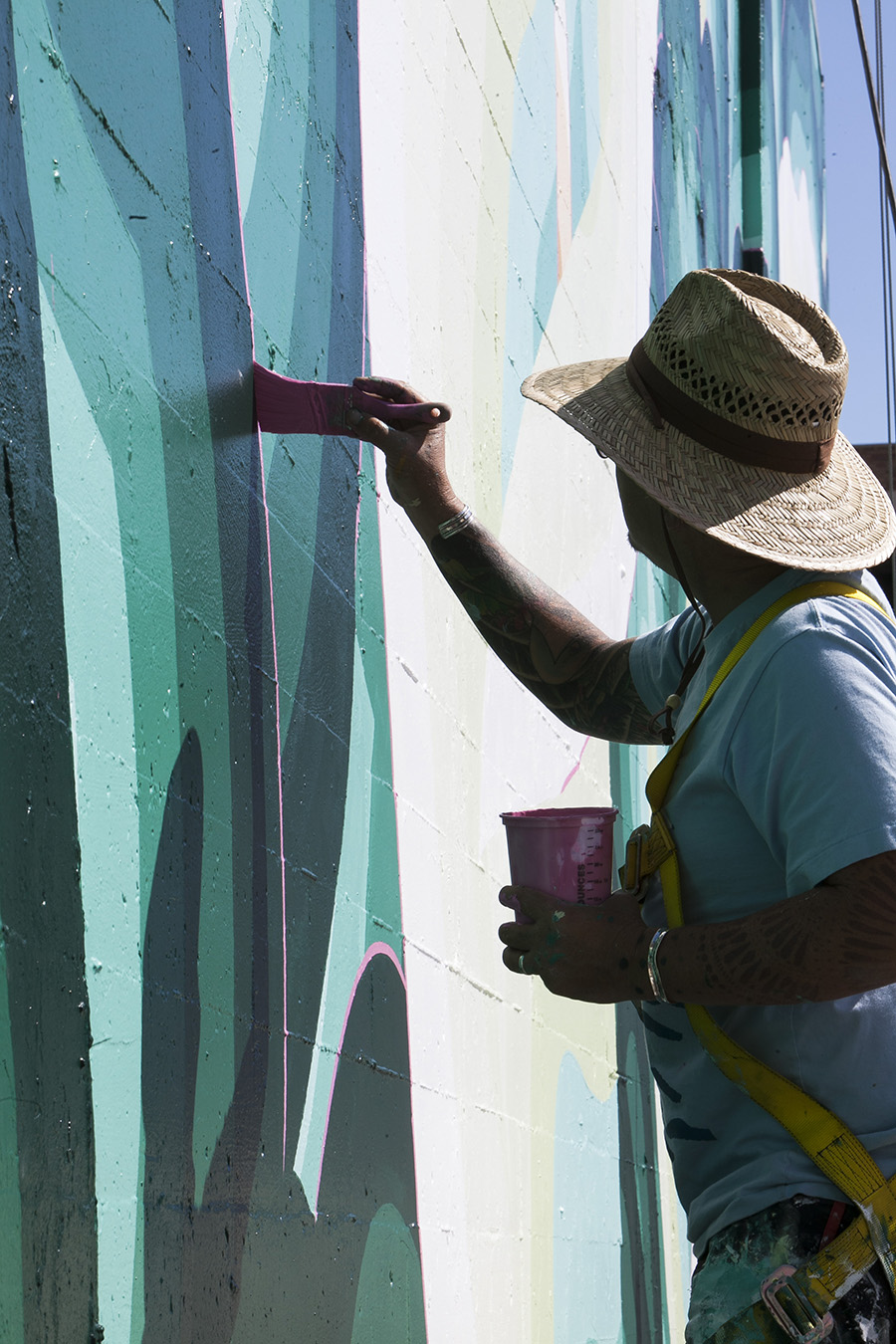
If you had to explain to someone the difference between being a street artist versus a muralist, how would you?
[Laughs]. Those lines are definitely being blurred. The term “street artist” is fraught with unflattering connotations and really doesn’t describe everything it tends to cover. But, that being said, I think the differences can be found in the influences of each artist.
For me, some of my first influences were murals, and I came up in that type of environment. When I started painting murals, I was thinking about that work. I learned about graffiti culture later in my practice, but I’ve never been a writer. I know other friends who came up in strictly graff circles who knew all about that world, but then found out more about the mural masters later in their careers.
California, and the Bay in particular, is a really special place where graffiti and muralism have coexisted in the streets for decades. This coexistence is what I think is trying to be described by the term “street art.” I think we have been way ahead of the curve here.
“In my practice, I have realized, I want to make work that reminds the viewer of what it is that we are struggling for.”
Your latest and largest mural to date, “There’s More To Green Than Money,” has been the talk of the town the past couple weeks in Downtown Oakland. How do you hope the community reacts and takes away from this mural?
Man, the reaction to that mural has really exceeded my expectations. It’s been so well received that it’s felt a little surreal. My hope with this piece was that it would be really well-crafted and that really integrated with the building. I thought that if I could take care of that the rest would fall into place. I painted this piece from a place of generosity and I really wanted to paint something really nice.
If I could be grandiose, I would hope that this or any other piece I do would go towards keeping a high standard for public painting. I hope that when people see this piece they feel like someone took the time to make something for them to enjoy. I have all my own reasons that go far beyond aesthetics for why I painted this mural, but I don’t need the viewers to know them.
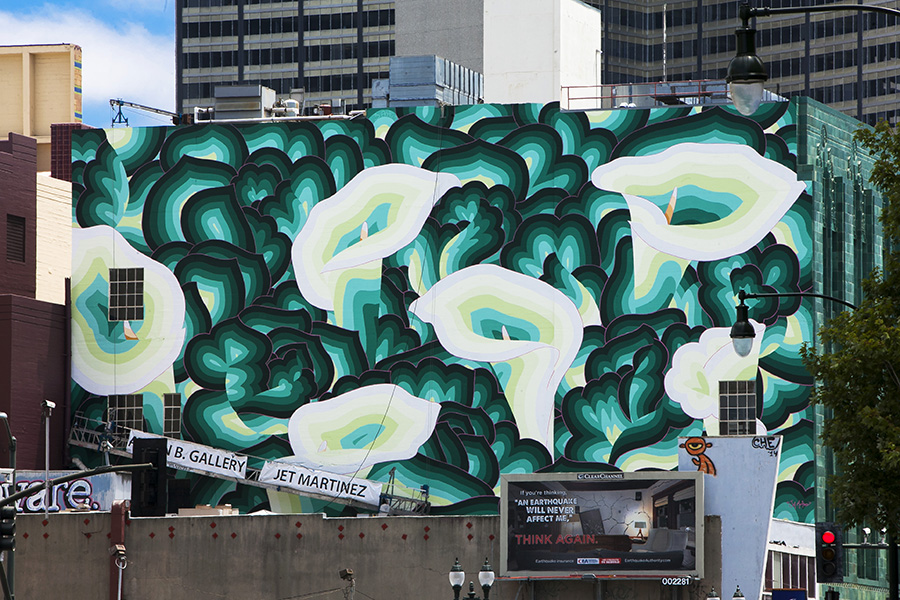
Did you approach this mural any differently than you have in the past?
I really didn’t. I think that’s why I have been a little surprised by how well people have reacted to it. Everything from the design to color matching to painting it was really pretty much the way I usually do my projects. The main difference was the scale. I hadn’t painted on such a large swing stage before. I also hadn’t used a grid to map out my drawing in some time. Most of the time, I couldn’t really tell what the overall picture was looking like, so there was a real need to trust the process. Luckily it worked really well, which has given me a whole new appreciation for trusting the process, as well a improved my confidence for larger projects.
What’s up next for Jet Martinez?
This year for me is the year of the mural. I have a few cool projects coming up in San Diego and Hawaii that I am really excited about. I’ll be painting with Pangea Seed’s Seawalls project and then at an art and music festival called KAABOO. I have several smaller Bay Area projects and then traveling projects through most of the fall and winter. For the next few months, just be looking for more mural projects. I will also be plugging away for my solo show at Athen B. Gallery in 2017. Good times ahead!
***
jetromartinez.com. Follow Jet’s work on Instagram @jetmar1 and check out more photos of the artist’s process of making “There’s More To Green Than Money” at athenbgallery.com.

